Published on December 20, 2012
Nguyen Van Coc rose rapidly to become North Vietnam’s leading ace in a combat career that lasted from 1965 to 1968. Yet before he shot down a single American plane, he would fall victim to American fighter planes first when he was shot down during Operation Bolo. Though he ejected safely, it was a learning experience that he did not wish to repeat. He returned to his unit, the elite 921st Fighter Regiment, determined more than ever to fight the Americans and emerge victorious. In every engagement that followed, he would make good on his promise — it would not be the Americans who prevailed, but rather Nguyen Van Coc.
This is the story of North Vietnam’s great ace of the Vietnam War, a man whose flying skills, tactical expertise and grim determination rivaled those of the world’s best fighter pilots — yet also a man whose story is little told in the West.
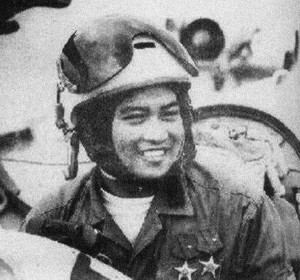
Early Life
Nguyen Van Coc was born in French Indochina (later Vietnam) during the French colonial period. His father and his uncle, both active in the Viet Minh, were taken by the French colonial authorities and killed. His mother took him away and raised him in the country — it just happened to be near Chu Air Base, where he watched French aircraft taking off and landing as well as paratroopers practicing. This sparked an interest in aviation and also fueled his desire to fight. Once older, he enlisted in the Vietnamese People’s Air Force (VPAF) and soon learned to fly at Cat Bi Air Base near Haiphong.
One year later, he was sent to the Soviet Union for advanced training in a four year program that was designed to produce an elite cadre of expert pilots around which a new, Soviet style air force could be developed. He graduated among the best in his class became one of North Vietnam’s MiG-17 pilots. After a period back in his home country, he was once again selected for more training in the Soviet Union. As one of the hand-picked best pilots, he was retrained and assigned to fly the top-of-the-line, Soviet-built MiG-21 fighter interceptor, a delta winged, lightweight aircraft that would soon prove deadly against the US Air Force and US Navy air missions over North Vietnam.
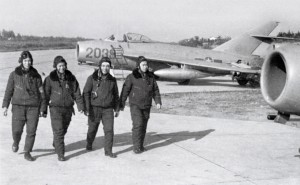
Ground Controlled Intercepts
Unlike the US Air Force and US Navy pilots, North Vietnam’s air force and pilots subscribed to the Soviet style ground-controlled intercept (GCI) methodology for air defense and air combat. Where American pilots were delegated wide authority to decide tactics and make operational decisions within defined rules of engagement, North Vietnamese fighter pilots were managed instead from the ground by a set of dedicated controllers who referenced the aerial battle through a radar screen.
Using this methodology, North Vietnamese pilots would be scrambled to their MiGs and take off to intercept carefully chosen targets where they could employ tactical advantage, often through concentrating superior numbers on an isolated flight of incoming fighter-bombers while the NVA’s SAM umbrella kept the USAF fighter cover at bay. Once aloft, they would check in on the GCI radio frequency and receive headings and altitudes so as to best position for an attack. Even when if a dogfight was joined, the GCI officer on the ground would remain involved, giving orders and headings and authorization to fire — this disadvantage meant that VPAF combat quickly evolved to straight-in interceptor missions that would dash in, fire missiles and turn away from combat to escape quickly.
Within that tightly managed GCI methodology, however, there was still latitude in the hands of the pilot, but only if he could take the initiative and remain within orders. Nguyen Van Coc was just such a pilot — he could think tactically, strategically and in three dimensions. Most other Vietnamese pilots would be vectored onto the target, take a shot and then, if American fighters appeared to pursue, they would escape away quickly. Nguyen Van Coc was tenacious and chose to directly engage the American planes and pilots, employing his excellent piloting combat skills to his advantage. Even though he was often assigned to the wingman position, he chose to engage whenever possible, while still protecting his leader.
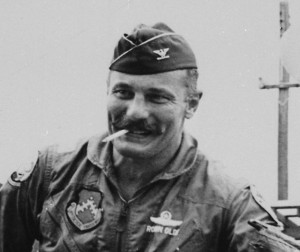
A Hard Combat Lesson
With the increases in US air attacks on North Vietnam, the VPAF was soon optimizing its missions so as to identify the American planes by their operational signatures, call signs, speeds, altitudes, use of SAM radar jamming pods and other characteristics. Radar controllers were able to identify the American combat air patrols based on the way they operated and, by carefully deploying and controlling their air defense assets, they soon learned to slip in and try to pick off incoming F-105 Thunderchiefs that were heavily loaded with bombs. For the American F-4 Phantom pilots, it was frustrating because they could rarely get the North Vietnamese to fight in a fighter-against-fighter engagement. Due to the SAM threat, they couldn’t penetrate deeply enough to pursue and engage the MiGs properly.
Finally, Colonel Robin Olds, USAF, the commander of the 8th Tactical Fighter Wing and a highly experience combat pilot, developed a ruse that was designed to trick the VPAF’s GCI controllers into vectoring the attacking MiG-21s not onto a flight of F-105s but rather onto his own flights of F-4 Phantoms, which flew in a manner that closely mimicked the F-105s as if approaching on a standard bombing run.
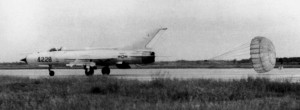
Among the pilots launched by the GCI controllers was the VPAF MiG-21 pilot Nguyen Van Coc. Making a fast hit-and-run attack on the F-105s had become standard fare for the VPAF. Even if they had only managed to shoot down two such aircraft, the tactic was clearly creating havoc among the American pilots, who had to jettison bombs and attempt to escape or pursue, usually without effect. This time, however, as the MiG-21 pilots made their attacks, they suddenly realized that the bombers were anything but — instead they had been lured into a carefully laid trap by Col. Robin Olds and his men. Three flights of F-4 Phantoms successfully flew in posing as F-105s. This tricked seven MiG-21s into an engagement — and when it was over, all seven of the MiGs had been shot down.
Nguyan Van Coc Returns the Favor
After being shot down, Nguyen Van Coc successfully ejected (in fact, all of the VPAF MiG pilots were successful and safely returned to their Fighter Regiment). If anything, as a result he was more determined than ever to gain victory over the Americans. He had seen what the American fighter pilots could do and had learned a lot from his own loss. Equally, the Soviets and VPAF were forced to reevaluate their tactics after Operation Bolo.
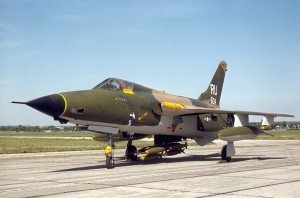
Nearly five months later, he would get his chance. Assigned to fly as wingman with another expert VPAF pilot, Nguyen Ngoc Do, the MiG-21s scrambled to intercept more incoming F-105D Thunderchiefs from the USAF’s 355th TFW. Both pilots would down an F-105D Thunderchief, each using their R-3S Atoll air-to-air missiles in the ensuing hit-and-run engagement. Nguyen Van Coc’s victory was over an American pilot named Robert A. Abbott.
Nearly four months later, on August 23, 1967, he engaged again — this time, he fought with an American F-4D Phantom of the 555th Tactical Fighter Squadron, one of America’s premiere air superiority fighter units in the Vietnam War. Once again, he would prevail, shooting down Major Charles R. Tyler (the pilot, who was captured) and Captain R. N. Sittner (the WSO, who was killed in the engagement). Likewise, in October and November of 1967, Nguyen Van Coc shot down a further three F-105 Thunderchiefs in three separate engagements, making him an ace with five kills.
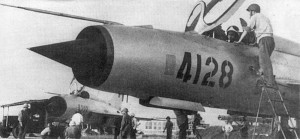
Final Kills of the War
Two months later, in February of 1968, Nguyen Van Coc again encountered American fighter planes. In the first case, he flew against an unexpected type — a delta-winged F-102A piloted by 1st Lt. Wallace L. Wiggins of the 405th Figher Interceptor Wing. He successfully shot down and killed 1LT Wiggens in the engagement — though the VPAF only awarded him a probable, later USAF records would confirm the kill. Then, two weeks later, he encountered more of the feisty F-4 Phantom fighter planes — and he again shot one down.
In May, after a confusing set of GCI errors that nearly the VPAF MiGs engaging each other, the flight that Nguyen Van Coc was flying encountered five US Navy F-4 Phantoms from the USS Enterprise. Despite being low on fuel, Nguyen Van Coc pursued the American flight leader out to sea, shooting him down by firing both of his R-3S Atoll air-to-air missiles. Both the American flight crew survived and were rescued to fly another day.
Nguyen Van Coc’s final engagement of the war was against what he reported as an AQM-34 Firebee, an unmanned drone that the USAF deployed during the Vietnam War. This was an unfamiliar aircraft to him, however, and research suggests that actually he engaged and shot down an OV-10 Bronco forward air control aircraft. The date was December 20, 1969 — today in aviation history — and this would be his final combat of the war.
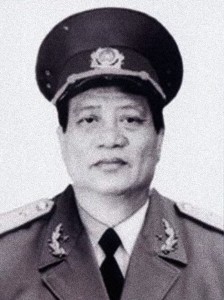
End of a Combat Career
With nine confirmed kills to his credit, Nguyen Van Coc was retired from front line combat duty and reassigned to a training role. From there, after the end of the Vietnam War, he rose to the senior ranks of the VPAF, eventually attaining the position of Chief Inspector of the VPAF in 2002 — after a full career serving his government and military.
Ultimately, Nguyen Van Coc established himself as one of the leading jet combat pilots of all time. Only a handful of pilots worldwide in the Vietnam War and post-Vietnam era have scored more kills than he did — and most of those are Israeli fighter pilots who, arguably, fought against pilots who did not have the skills of the VPAF’s American opponents. Nguyen Van Coc’s record is a stellar example of skill, facing the vaunted US Air Force and US Navy. All of his kills were with R-3S Atoll air-to-air missiles and incredibly six of his victories were downed while flying as wingman for others.
He was, to put it simply, one of those rarest of rare expert combat pilots who sometimes emerge from the most unlikely nations, places and circumstances. Among fighter pilots, it is often said that you should never discount your enemy’s skills, even when you have every advantage, because sometimes, it might not be the average pilot in the other plane, it just might be a man with the skills and tenacity of Nguyen Van Coc.
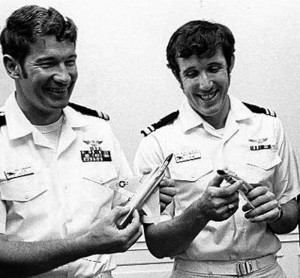
One More Bit of Aviation History
On the American side, the Vietnam War produced only a handful of aces — from the USAF, just three men, Charles B. DeBellevue (WSO with six kills), Richie Richard (pilot) and Jeffrey S. Feinstein (WSO) — the latter both had five kills and were part of the USAF’s 432nd TFW. From the US Navy, only two men emerged as aces during the war, Randall “Duke” Cunningham (pilot) and William P. “Willy” Driscoll (WSO), both with VF-96 “The Fighting Falcons”. All of the Americans flew the F-4 Phantom fighter interceptor.
Today’s Aviation Trivia Question
In the so-called “modern era’, from the Vietnam War to present, who are the top five leading aces worldwide (counting kills achieved only during the period of 1962-present?

Very Interesting Read — Never heard anything about Nguyen Van Coc! Saw some MIG Aircraft in Taiwan this year (2013) while at their Air Force Academy.
Is it possible to get copies of N. Vietnam pilots debriefings or combat reports against the USAF? I especially interested in any records against the 421st TFS during the war. Jeff
The actual airframe that Randall “DUKE” Cunningham and Bill “WILLIE” Driscoll flew to become the only US Navy aces in Vietnam is alive and well on display at the Navy Air Power Park in Fallon NV, NAS Fallon. It was flown off the USS MIDWAY CV-41, now a museum at San Diego CA. A young naval graduate from Annapolis wrote his thesis on the aircrew. he came across the BU/SER NO. (BUREAU/ SERIAL NUMBER ) on the carcass at the boneyard. He procured it, got it to Fallon and started our Park. It has a dozen of our popular more modern aircraft, with a few of our adversaries MIGs, and other notable aircraft by the Main gate.